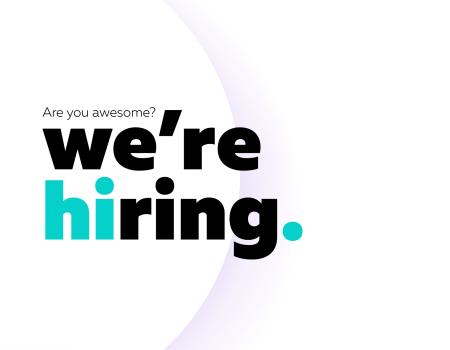The Agile Podcast: Episode 4 - Fork the Code (Backdrop CMS)
Today’s episode is for those who just can’t get enough of Drupal 7 (or are frustrated with the direction that Drupal is going). Brie and Blake talk with the founders of Backdrop, a CMS that is nearly identical to Drupal 7. We’ll talk about who Backdrop is for with its founders Jen and Nate Lampton.
Learn more about Backdrop CMS.
0 (0s): <Intro Music>
Blake: (7s): From Washington DC. I'm Blake Newman
Brie Ripley: I'm Brie Ripley.
Blake: And this is The Agile Podcast, where we explore the stories and people behind agile web solutions in this series, we're talking about Drupal 7's end of life, which means it's losing its support and retiring.
Brie Ripley: (22s): Woo sunbathing golfing taking up a new hobby.
Blake: (27s): Well, Drupal 7 may be retiring, but website's powered by D7 must go on. Which presents a problem for anyone running Drupal 7
Brie Ripley: (35s): Last episode, we talked about one solution to this problem, sticking within the Drupal family and migrating to Drupal 8 or more likely 9,
Blake: (43s): But that's a big move for one major reason.
Brie Ripley: (46s): Drupal 8's core, It will now sit on top of Symfony instead of its own proprietary PHP framework
Blake: (53s): And moving between these two is a big translation, like going from the Italian to Chinese.
Brie Ripley: (60s): So today we have an episode for the Drupal 7 lovers. Drupal 7 fans. Now the Drupal 7 stans
Blake: (1m 7s): Like those roadies, that follow bands are all over the world, but instead of setting up a stage, Drupal Stans are setting up websites and we're going to talk about a way to move to a different content management system. Very similar to Drupal 7. Now This CMS is called Backdrop and I've never heard of it until a couple months ago. I was talking to Gordon. He's a Drupal architect who is appeared in some of the Agile podcast episodes. So we were talking, so how's your weekend.
0 (1m 36s): My weekend was good. It was Super eventful.
Blake: And we get to talk to me about Drupal as you do. Right? And I asked him about the impact of Drupal 7's end of life. And he says something that catches my ear. I don't necessarily think of it as the end.
Brie Ripley: (1m 52s): Hmm. Simply because a, there was a splinter group of probably five years ago that decided that they loved a Drupal 7 and they were not thrilled with going the Drupal
Blake: (2m 4s): 8 route. So they Fork the Code
Brie Ripley: (2m 7s): As a splinter group. Fork in the code this all sounds like the army have the 12 monkeys meets a spaghetti restaurant.
Blake: (2m 19s): Yeah. Like the, you know, trying to think of the, this thing with the eye, the Leonardo's are the, not the Leonardo is the tree anyway, whatever.
Right. Fork in the Code
Blake: we talked about that in the past is basically making a copy the code so you can customize it. But this is the first time I'd heard the Drupal 7 Code being forked. And it was done by this group of developers who called this new CMS Backdrop, which has a plan words. That's a really technical, and I'm not even going to explain it.
Brie Ripley:Come on, come on, come on.
Blake: (2m 50s): Oh, okay. Well, before Drupal was called Drupal, it was called drop. And after Drupal evolved to where it is today, some developers didn't like where it was going. And simply to go back, back to when Drupal was called drop Backdrop Backdrop I called up Nate Lampton who not only co founded Backdrop CMS but also works for high profile Drupal shop here's Nate.
Ken Lampton: We took the code base of Drupal 7 and we made a copy of it and put it in a different location and then set a different set of goals or where we want him to take it.
1 (3m 24s): So we started from a common point, but then we diverged in the approaches that we used from that point forward. So that's
0 (3m 34s): amore or Fork in the code.
Blake: (3m 38s): Yep. It's based off of Fork in the road, you know, you are going down to single road
0 (3m 41s): And then all of a sudden you get to a point and you can either go to the left or you can go to the Right and one project is left in the end, it goes, right.
Blake: (3m 48s): That's Jen Lampton another co founder of Backdrop CMS who runs her own web development company. She works mostly on local government sites in with a few small businesses.
0 (3m 57s): My favorite is a local puppy trainer and they're my favorite because they have the best content. And when I get to work on their website,
Blake: (4m 5s): Oh, who doesn't love puppies? Well, Jen says that with the weight group, which is going, it became difficult to recommend Drupal to clients.
0 (4m 12s): I sort of specialize in the longterm relationships with my websites. And so I have a bunch of clients that I've been working with since Drupal 5, one of them's, since Drupal 4.7, it's the same website is still working on it. And every time we come to an upgrade, you have to kind of sit the client down and be like, okay, we're going to do an upgrade. It's really important. You need to keep getting, you know, security updates. You want to make sure you're a new face features are easy to implement, but it's going to cost something. So the worst part cause can be a little bit shocking from the client side of things
Blake: (4m 43s): And, and the move to D8 Jen felt like it was too expensive.
0 (4m 46s): And the price tag got to be a point where I did not feel good about going back to the same clients and saying, this is how much it's gonna cost to upgrade. Most of the cases for my clients, the cost of that upgrade was more than they paid for their original website. And it felt like that's not that wasn't software. That was good for them anymore. It wasn't benefiting them. So this is a story about being at all.
Blake: (5m 14s): Yeah. Like many Drupal developers, Nate and Jen didn't love that way. Drupal was going after Drupal 7. Jen didn't think Drupal was right in terms of price and functionality for a smaller clients. Nate came this realization while he was working on the module for Drupal 8's core a few years ago,
0 (5m 30s): Back in the day, he was a core contributor to Drupal when Drupal 8 was being built, AKA he's got a big time get hub following. And he was one of the major Drupal you know?
Blake: (5m 40s): Cool. Yep. And Jen was too. Anyway. Nate had submitted this module for a review. Then someone came back to him and said, he'd have to rewrite the whole thing because Drupal 8 was going to be really different than Drupal 7. And Nate,
I can see this is going to be a problem. And I just saw the sustain inevitable that we are going to have to rewrite every Drupal website in existence because of this drastic amount of change that was occurring. And I didn't think that that would be possible for the Drupal community too, except that it was going to be an absolutely enormous cost for every Drupal website out there then at a DrupalCon basically a conference for Drupal people Jen is some other developers were talking about how D8 was getting technically frustrating.
0 (6m 31s): And we all kind of looked at each other and shrugged our shoulders and said, Hey, you know, if, if your boy gets too complicated and we can always Fork It ha ha
1 (6m 39s): Yes.
Blake: (6m 42s): And that's basically what happened, Nate, forked it secretly and put it on Github. Yeah.
1 (6m 47s): GitHub is basically a code repository where developers can share and collaborate on code. So they don't have to reinvent the wheel each time. Some other developers who followed Nate on GitHub, found the repo and started asking about it. Basically the Code got out, they blew his stealth mode and a group of those developers made it official. They wrote down some core values, some philosophies that would steer their CMS in the future. And today that's Backdrop CMS
0 (7m 15s): And anyone could Fork the Drupal code because of Drupal's license.
1 (7m 20s): Anyone who downloads any distribution of the software has the fundamental right to take it and modify it and then redistribute their modified version. As long as you keep the same license. And don't, you know,
0 (7m 34s): And if you do this, you end up with something very similar to Drupal seven. Now
1 (7m 39s): Jen says a Backdrop is basically a carbon copy of D7, but then they made it simpler and easier to set up install. And manage content.
0 (7m 47s): What about the community and contributed modules that made Drupal is so powerful and the security of having that community looking out for bugs.
1 (7m 55s): Yeah. The bug catchers. Well you're right. Drupal has a whole army of people contributing modules that extend functionality and identify security vulnerabilities, create patches backed up. This has 200 contributors. Here's Nate again in the open source scheme of things, having 200 plus contributors to your open source project is an enormous achievement. That is a, a large number of active contributors that are working on one software project.
1 (8m 25s): So
0 (8m 26s): The Drupal's open source community is really big. Maybe even the biggest open source community and the world working on a single software project Backdrop you can't really compete with that. But does pretty well. All things considered. So like what about migration? How much will this cost as a client to maintain?
1 (8m 44s): Well Backdrop was really focused on their ideal client nonprofits, small governed agencies, companies without a big tech budget. It's about providing maximum value without compromising quality. And that is affordable price.
0 (8m 57s): Backdrop started five years ago and Nate says that they're still on version one.
1 (9m 2s): I mean, we're on the Backdrop 1.16, but our plan is to maintain full compatibility within the 1.x version four I I'm going to have to check the end of life date, but I'm pretty sure it's for an additional two years still. So very, very long life cycle. And that's because literally philosophy number one is that backwards compatibility is important. It's super important because they didn't want to repeat the same sticker shock that owners of Drupal 7 sights received when they heard how much it is going to cost to migrate to D8 or D9.
1 (9m 38s): Now here's the rub. Well, it may be in the best interest of an organization to move to Backdrop, it might not be in the best interest of a Drupal shop. The move to D8 or D9 is massive. And time-consuming which translates into a billable hours for a web company, a huge amount of money will likely be spent on It. Nate works at a Drupal shop. And he told me about a Drupal 6 site he built for $40,000. That site was upgraded to D7 for about a 100,000. The site hasn't moved to Drupal 8 yet, but the estimates that Nate's team has given them are like $1.5million.
1 (10m 9s): And when you ask about the cost of some of these migrations, Oh dear. Well, so with the agency that I worked for, like, this is our jam, like taking a Drupal 7 sites and then moving them to Drupal 8, I'm a business person, but I know that these are multi million dollar projects. Like I think some of the larger ones have been 5 million plus. And,
0 (10m 39s): And as we know, Backdrop, it is yeah,
1 (10m 41s): Much less expensive Backdrop doesn't cost enough. Honestly, Nate tells me that he's tried to take on contracts from migrating to Backdrop financial people and in my company and looked at it and said that doesn't make business sense for us to allocate people to this project because it just doesn't meet a minimum threshold
0 (11m 2s): Because its really cheap,
1 (11m 7s): Probably have to meet some requirements to make the move to Backdrop. The first is that you likely need a rare Backdrop developer or a small Drupal 7 agency because these big fancy ones don't want to touch a project. This is so little revenue. 0 (11m 19s): So what Nate was talking about with the cost of Backdrop
1 (11m 23s): Actually the low cost Backdrop and too you need to be building a site no more complicated than a simple marketing site. If you wanted to do something more complicated, you may need something more powerful and capable. Like Drupal 9 or Symfony here's Jen Again
0 (11m 37s): Backrop is a system is specifically for making websites. So if you have a website and not a web system, a backdoor, it might be a better fit for you. If you need a coupled framework. That includes components from, from lots of different systems Drupal is going to be a better fit. But if all you need to, the Backdrop is going to be faster, it's gonna be easier to maintain. It is going to have a better user interface and it's going to be really good at producing that website. Right? So Backdrop, CMS like a really interesting project.
0 (12m 7s): Like the people behind it saw this problem. And at first in a joking way, came up with an agile solution. It's genius like chef's kiss genius. They pivoted and repurposed the Drupal code for something that better serves small clients and nonprofits.
1 (12m 24s): And if it's right for you, Backdrop can save you some time, money and the headaches of having to migrate every few years. And to be clear, a lot of people are going to stay in Drupal
0 (12m 33s): I'm not worried that Drupal is going to die, but I do have a handful of clients who are moving to Drupal 8 and 9. And my biggest concern for them is the continued increase cost of the software that they're running, especially for these government agencies, like they are spending my tax dollars. So I feel it two ways, not only and the waste out of my own tax money where I feel like they could have chosen a different platform in it wouldn't be as expensive.
0 (13m 8s): But also the fact that, you know, they've, they've gotta factor this into their projects now in a way that makes everything a little bit less comfortable for that
1 (13m 25s): Brie knowing all of this and being someone who manages the state agencies, digital presence. What stands out to you about that?
0 (13m 31s): First of all, the price you really can't compete with something that is not going to make higher up scope. Oh my gosh. Every single time you bring them a budget. Like, like if I had a dollar for every time I got that reaction. Yeah. They're they're pretty, you know, they, they have tight budgets and a digital stuff costs. It's a lot. So this, this is a total pro.
1 (13m 56s): Okay, well is there anything you don't like about the sound of Backdrop?
0 (13m 59s): I wish I could say like nothing, but I really can like one of the things that I, I really appreciate about the Drupal people, it's the community that they've built and just how many people are working on patching bugs, working on different iterations and fixes.
1 (14m 17s): No, that's true. But you know what? I would rather have a handful of brilliant, passionate, committed developers than a ton of others who are just not nearly as passionate, committed. I see your point. Yeah. I mean, it's this kind of like throwing more developers on a project that that does not necessarily make it go faster. And there's also this concept of like, you know, like a 10 X developer where like one really great developer can do 10 times the work of, you know, mediocre developers.
1 (14m 48s): Right? Well, next week we're going to present another option where to go from December. And this is if you wanted to leave the troop of world all the time,
0 (14m 55s): We'll talk WordPress, Wix, and how to better meet your needs through a different content management system than Drupal. So tap the subscribe button on the Agile podcast on Apple podcasts or wherever you get your podcasts.
1 (15m 9s): And please leave a review while you're at It. Thanks for listening until next time The Agile Podcast is produced by Agileana, a DC-based web development company, to learn more about Agileana, you can visit our website agileana.com or send us an email at [email protected]. That's A G I L E A N A.com. Hey Brie let me play you just one more clip from Jen.
0 (15m 38s): All right. Backdrop is a system that doesn't assume you're a developer it's for people it's for, you know, average people. So leisure in our face for everything. You never need to use the command line. If you don't want too, you don't need to get into the Code. If you don't need too, you don't even need to visit BackdropCMS.org. Everything you have is done inside the application itself.
1 (15m 58s): Can you believe that, Backdrop going to put me out of business?
0 (16m 1s): At long last. I'm just kidding, Blake. Free from developers. I mean, I love Backdrop, I just love them. and I just, I wanted to get out from, you know, The the tech lingo in the developer world that nobody can really understand.
1 (16m 18s): You know what, I'm a fan too.



